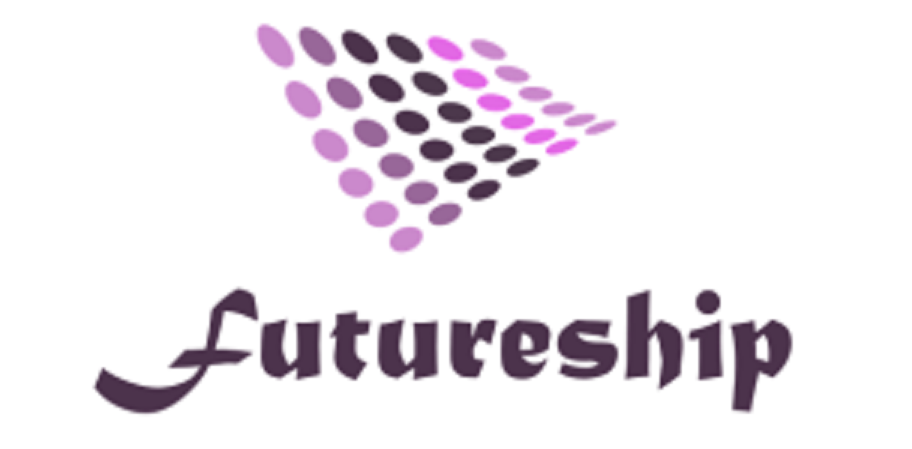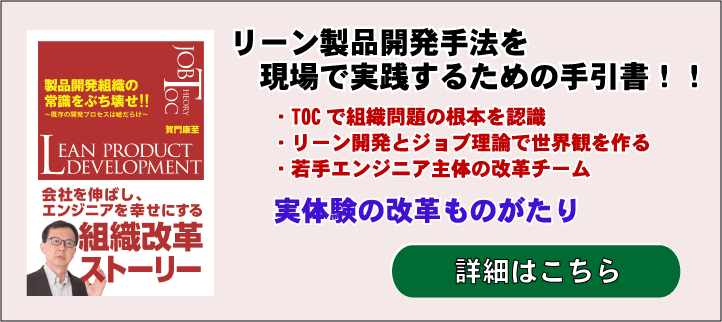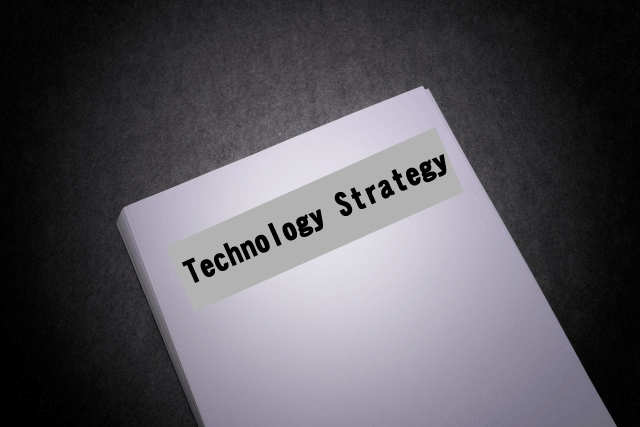

This presentation will discuss the “Technology Strategy Document” out of the gate, and how to put it together for what purpose as a product development department!
At various manufacturing companies, I’ve heard the question, “Do you have a cohesive technology strategy?” the answer is “of course,” but the substance of the answer varies. Although it is the company’s way of thinking, we will share some of the key points to make it more practical and useful.
As a consultant specializing in product development, I have provided support for management and technology strategies from planning to deployment, and have summarized my findings in developing and implementing a “technology strategy.
Contents of this article
Purpose and Positioning of the “Technology Strategy Paper”
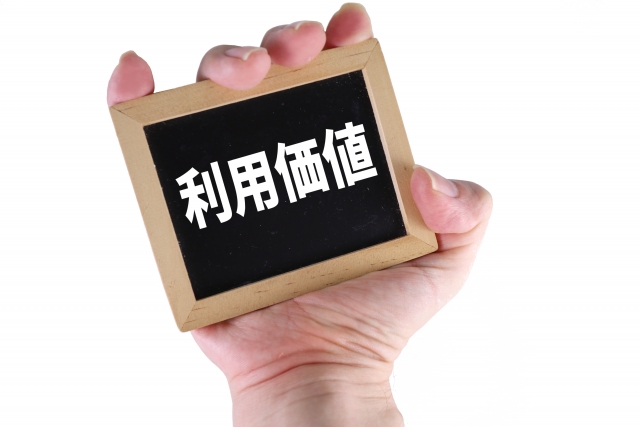
Let us consider what is the purpose of developing a technology strategy, compiling a strategy document and developing activities according to the strategy document, and the position of the technology strategy or “technology strategy document” within the company.
What is Strategy?
Surprisingly common is the misunderstanding of “strategy.
The main objective of “strategy” is to win or not to lose the competition, and the strategy is to analyze the situation and formulate a strategy to avoid losing the competition.
Examples of bad strategies include the following
- It is decorated with rhetoric, but has no substance or is empty
- Focusing on immediate issues and not addressing the most important ones
- Mistaking setting high goals for strategy
Strategy is about setting high goals, knowing the gap between the current situation and how to fill that gap.
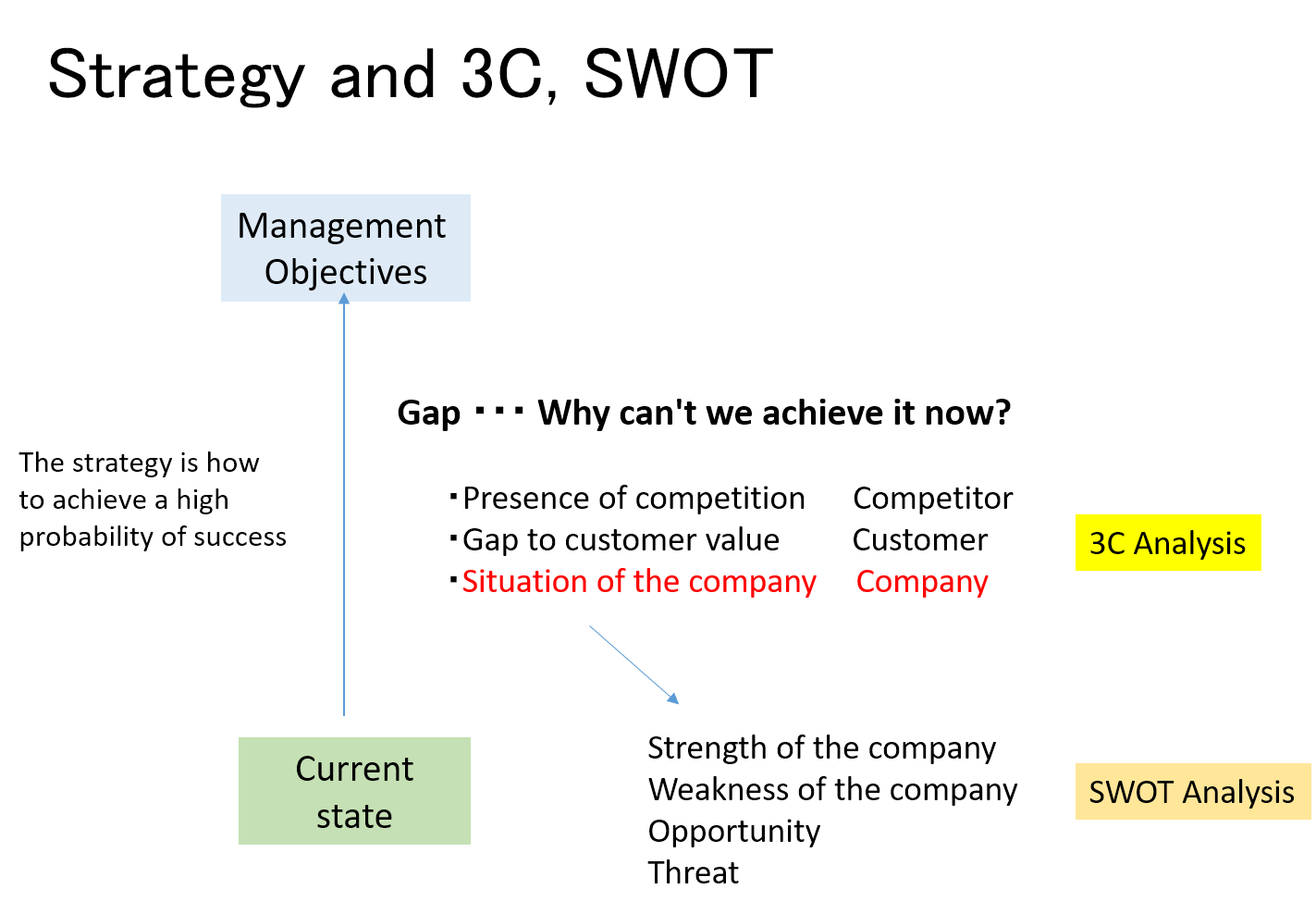
Also, the strategy is not a commitment.
The objective is to achieve or approach a high goal with a high probability of success.
For this reason, accurate analysis is extremely important.
The 3C analysis and SWOT analysis are well-known examples, but an objective and dispassionate analysis of your company’s situation, as well as that of your competitors and customers, is required.
The components of a strategy are
- Analysis and Diagnosis
- Basic Policy
- Action (plan)
The three are
Anything that is not based on analysis will not lead to a winning strategy.
The basic policy is the heart of the strategy, and we want to establish a simple and surprising basic policy derived from the analysis. Also, it is not a strategy to decide on a policy to deal with every single problem. We will formulate a major basic policy, which will lead to actions according to the policy.
And most importantly, what cannot be acted upon cannot be called a strategy.
Reference article: “Three Key Elements of Strategic Planning for Development Organizations”
Technology Strategy and Management Strategy
Technology strategy must be closely linked to management strategy.
The technology strategy is developed in a way that receives the management strategy, which is the higher level.
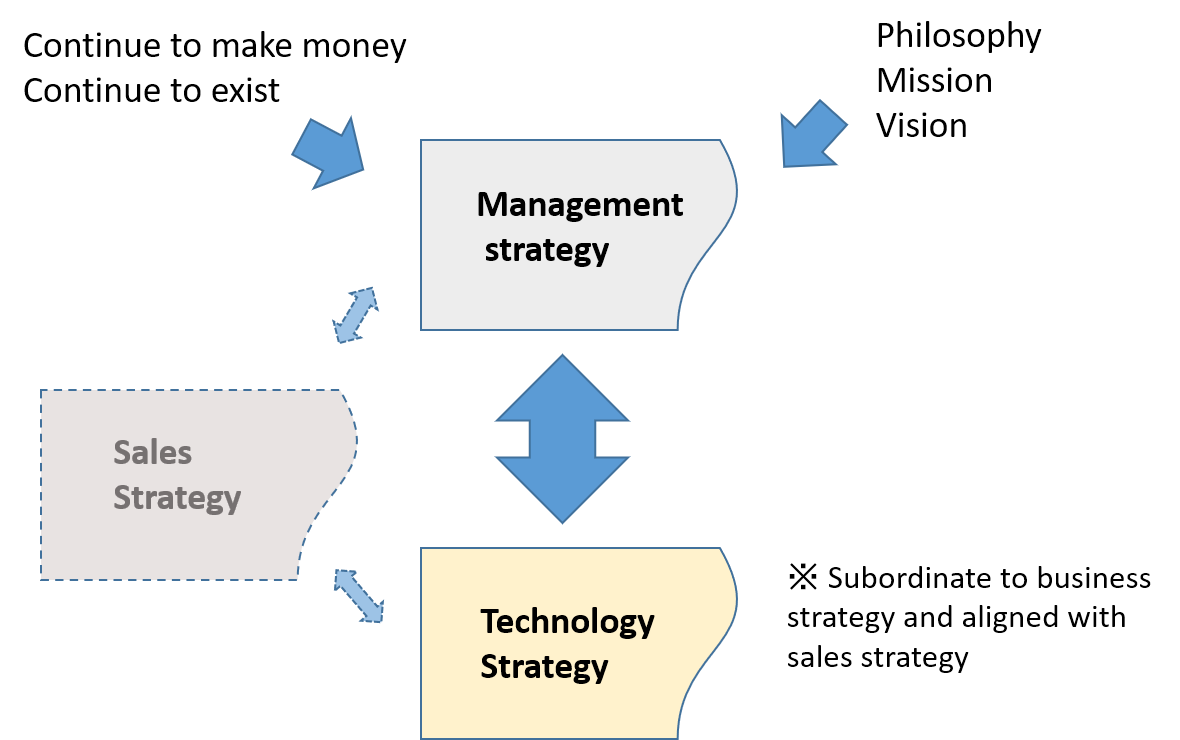
The main objective of management is to keep the company alive and profitable.
In order to achieve this primary objective, various visions and missions are established based on each company’s unique philosophy and approach, while also trying to coexist with the local community, etc.
Then, in order to achieve the mission and vision and continue to make money, the company must continue to win in a competitive society, and the strategy to achieve this is the “management strategy.
The sales strategy and the strategies of each department are formulated by breaking down the management strategy, and the product development department assists the implementation of the management strategy by formulating and executing the “technology strategy.
Therefore, the technology strategy should be formulated based on a deep understanding of the management strategy, i.e., the management policy, corporate mission, and vision, and as a means of ensuring the management strategy.
The technology strategy must also be coordinated with the sales strategy, etc.
What is important, however, is that although the business strategy is absolute, there should be some influence from the technology strategy to the business strategy in the form of feedback from what is found as the technology strategy to the business strategy side.
Rather, the technical strategy is formulated in such a way that it participates in management in the form of raising proposals from the technical side to management.
It is important to think of the strategies of other divisions in the same way, with each influencing the other to make the strongest strategy for the entire company.
Significance and Output of the Technology Strategy Document
Very broadly speaking, the output of the technology strategy is to formulate a roadmap for technology development.
And a technology development roadmap is a roadmap of what new technology will be completed by when and to what level.
To achieve this, we decide what kind of organizational structure and resource allocation we will use to promote technological development.
We then clarify the management impact and the degree of contribution to sales and profits as a result.
In particular, if it is a technology strategy for a product development organization, it is important to coordinate it with the sales strategy, and the product roadmap and the technology development roadmap must be consistent.
The correct strategy will only be realized when all of the following are connected: what products will be released to the market and when, when will the technology development be completed, and what revenue will be generated by the company as a result of this development.
Next, the output of the technology strategy is the technology roadmap, but another important thing is to clarify the background and rationale for deriving the roadmap.
The rationale for deriving the technology roadmap should be unique, making maximum use of the following three analysis results.
- Capabilities and DNA of the company (Company)
- Competitor trends (Competitor)
- Changes in the market and customer environment (Customer)
Analyzing these three elements is called 3C analysis.
In addition, SWOT analysis (Strength, Weakness, Opportunity, Threat) analyzes the company’s capabilities and environment.
The evidence of how the company, its competitors, and the market were analyzed and the technology roadmap was derived from the 3C and SWOT analysis is indispensable for reviewing the strategy itself and making necessary revisions in the future when activities based on the strategy encounter obstacles or when results are not as expected.
It is important to note that the logic that leads from analysis to conclusion is sometimes poorly reasoned or strongly influenced by personal opinions, and the results of the analysis must be clearly stated in the technical strategy document in order to check the connection from analysis to conclusion.
Pitfalls of the Technology Strategy (book)

Based on our experience in developing technology strategies and writing technology strategy documents for a variety of companies, we will explain the pitfalls that can easily befall you.
Insufficient analysis and not a winning strategy
The most important thing when formulating a strategy, or in other words, a basic policy, is to conduct a thorough analysis.
Analysis is a steady process, and it is difficult to set goals for how far the analysis should go.
So the more you do it, the deeper you go, but it is not noticeable if you don’t do much.
Thus, the pitfall is that the analysis will inevitably be weak and put together in a half-hearted way, resulting in a failure to develop a good strategy.
It depends on the nature of the analysis work. While in-house analysis can be completed in-house and is relatively well organized, competitive analysis and market/customer analysis cannot be done well without know-how.
For competitive analysis, you can gather a lot of objective information by steadily analyzing patents, official announcements of competitors, and comments made by executives in the media over time.
After gathering information, the important thing is to develop analytical skills to find out what you can from the results of your analysis.
Market and customer analysis is exactly what you need to develop your marketing function and marketing thinking skills at the organizational level to make unique discoveries that other companies cannot grasp in order to develop a winning strategy.
In addition, although it may be a detail, when conducting a 3C analysis, it is relatively possible to properly analyze the current situation regarding the company, competitors, and customers, but in fact, the most important part of the 3C analysis is to read trends for the future.
Please keep that in mind as you proceed with your analysis.
Result-Oriented Analysis and Strategy
What sometimes happens in strategy formulation, not only in technology strategy, is that the strategy becomes result-oriented.
What are the results in this case?
- Given in the management strategy
- Product roadmap for sales strategy
- Technology roadmap decided by top management
- Last year’s strategy document
Since the management strategy is a strategy above the technology strategy, there is nothing wrong with following it, but to follow it blindly is to lose sight of what you are trying to analyze and derive results from a technology standpoint.
If, as a result of analysis and consideration from the standpoint of technology, it is necessary to revise the management strategy, then this should be reported to the upper management.
The same applies to the sales strategy. Instead of a product roadmap created by sales, the results of the study from the technical standpoint should be compared with the sales requirements, and if necessary, a new roadmap should be proposed after careful scrutiny.
Discovery of the top management’s intention should not be at the expense of the true desire from the technology standpoint.
In addition, in an organization that is continuously rolling strategy, there is a bias to compile a strategy document based on the previous year’s strategy with as few revisions as possible.
Competition and markets are changing faster and faster.
Even with rolling strategies, we want to make sure that we are making the right decisions based on fresh information.
Failure to prioritize
Without a solid basic policy for the strategy, the discussion will move in the direction that everything should be done.
In other words, we cannot discard what is unnecessary.
And resources are not infinite.
In order to obtain the best results, i.e., profitability, to the extent possible with your company’s resources, selection and concentration are essential.
The basis of strategy is to select the important areas and concentrate resources there to achieve results.
It is thought that a causal relationship is established between the inability to narrow down the focus ← unclear basic policy ← inadequate analysis.
Not linked to management and sales strategies
As you will understand from the explanations given so far, a technology strategy alone cannot function as a company-wide strategy if it stands alone.
It must be coordinated with management strategies and strategies of other divisions, especially sales strategies.
Also, as I have already told you, blindly following the management strategy is not very good either.
It is important for both parties to stimulate each other on the content of the strategy in order to achieve greater results from the strategy.
How to put together a strong “technical strategy document

A “technical strategy document” is not a must-have for every product development organization.
There are many companies that have a strategy but no strategy document. When we ask them, they often do not give us a very clear answer.
If you have gone to the trouble of analyzing and formulating a strategy, which has led to the current action plan, we would like you to clarify it in writing and make it known within your organization so that you can smoothly respond to future changes in the environment
Items to be included in the technical strategy document
There is no set format for a technology strategy document.
The order in which the strategies are compiled varies from company to company.
The following are some examples of important items that should be included.
- Preface part
- Understanding of business issues and alignment with business strategy
- Analysis and Diagnosis Part
- Analysis of current environment (competition, market) – 3C analysis
- Future trends regarding the environment (competition, market) – 3C analysis
- Resource analysis of the company (current activities and future projections)
- Strengths and Weaknesses of the Company・・・SWOT Analysis
- Position of the company in the changing environment: 3C + SWOT
- Consideration of analysis results: How to connect to the basic policy
- Strategy Part
- Basic policy・・・Basic policy of the strategy derived from the analysis
- Explanation of key technology issues: Key technology issues selected based on the basic policy
- Brief description of technical issues
- Competitive win scenarios, success criteria
- Development cost, resource plan, and schedule
- Risks and countermeasures
- Profitability plan (costs and returns of the overall strategy)
- Challenges and measures (proposals to top management) to promote technological development in accordance with the basic policy
- Action Plan Part
- Technology roadmap and product roadmap
- Alignment with sales strategy
- Proposed development structure
- Immediate Action Plan
- Technology roadmap and product roadmap
*Some items should be added and some are unnecessary depending on the company’s situation.
A strong strategy starts with good basic policies
When considering the process of putting together a technical strategy document, there is a tendency to mistakenly believe that the analysis at the front of the document and the roadmap at the end are the main focus of the document, since these two areas are large in volume and take a long time to put together.
It is true that even in the strategy formulation stage, the analysis and roadmap creation can be the most mind-boggling, but in fact, the most important part of the strategy is the basic policy.
The basic policy of strategy, for example, in the battle of Okehazama by Nobunaga Oda, is to “attack from the side with a long and narrow column, concentrating on a single point where the general is located, and then attack down at once.
It is said that a good strategy is one that is both simple and surprising.
In other words, the conditions for a good strategy are that it is something that no one notices, but that everyone can strongly agree with later, that it is simple, and that all that is left is to execute it.
In order to develop a strong strategy, or a strategy that will not lose, we should not focus on analysis and roadmap creation, but rather concentrate on developing a basic strategy policy that is simple and surprising and that other companies will not notice.
What Futureship can do for you in developing a technology strategy document

As a consultancy specializing in product development innovation, we have always placed great importance on strategy-based reforms.
We have helped many of our clients develop and implement management strategies, mid-term business plans, and technology strategies.
- Strategic thinking enhancement for individuals and organizations
- Support for strategic planning itself
Futureship provides strategic consulting support in the above two ways.
Strategic Planning Skills Enhancement Seminar
We offer a 4-hour seminar (for a fee) to help you gain a proper understanding of strategy and learn how to develop the right strategy.
We regularly conduct these seminars in small groups in an online format, so please join us.
Seminar Program:
- What is Strategy?
- Wisdom of the ancients
- The 5 Forces of Competition
- Good and Bad Strategies
- Management and Technology Strategies
- Problems with current strategic planning
- Strategy and 3C, SWOT
- Why the content of the strategy cannot be achieved now
- Strategy Formulation Process
- Customer Value and Competitive Advantage
- Weaknesses of the company
- Deciphering the Times
- 3C Analysis and Period Analysis
- Read your company’s DNA
- Read the competition and world trends
- Period Analysis
*Program contents are subject to change.
Strategy Development Support
We provide support for the formulation and implementation of various strategies.
- Management Strategies
- Management Planning
- Technology Strategy
- Organizational Reform Strategy
In strategy formulation, our consultants can help you develop winning strategies and the right strategies with the following capabilities.
- Facilitation skills
- Understanding of how to proceed with strategy formulation, pitfalls, etc.
- Understand the heart of technology development, regardless of product area
⇒You can talk about technology development plans with your company’s engineers on an equal footing.
If you are interested, please contact us using the inquiry form.
(We will contact you.)
